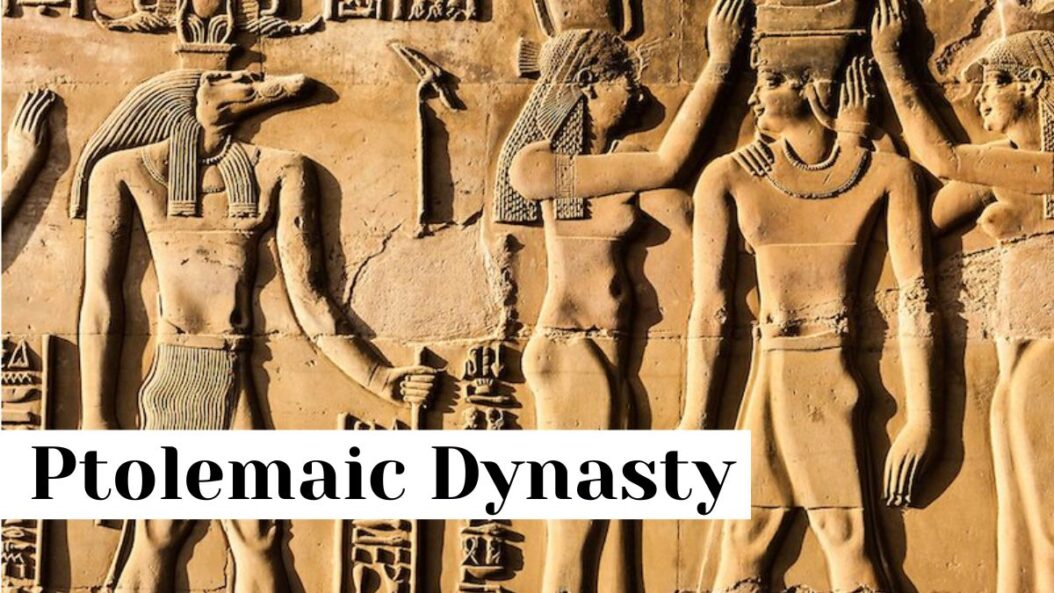The Ptolemaic dynasty ruled ancient Egypt for nearly 300 years, from 305 BC to 30 BC. They were descendants of Ptolemy I Soter, a Macedonian Greek general who served under Alexander the Great. After Alexander’s death, Ptolemy seized control of Egypt and established himself as pharaoh.

Military Technology
The Ptolemies continued using the advanced military technology that Alexander had introduced to Egypt. This included:
Warships
The Ptolemaic navy used various types of warships, including quinqueremes – large galleys with five rowers per vertical section. They engaged in naval battles for control of the Mediterranean.
Siege Towers and Battering Rams
To attack fortified cities, the Ptolemies used towering siege towers to scale walls and heavy battering rams to smash gates.
Catapults and Ballistae
For launching projectiles at enemy troops, they utilized torsion-powered catapults and tension-powered ballistae that could fling arrows and stones.
Infrastructure Technology
The Ptolemies also invested in infrastructure to strengthen their kingdom:
Lighthouses
To improve navigation for maritime trade, they built the famous Lighthouse of Alexandria using advanced architecture and mirror optics.
Canals and Irrigation Systems
They constructed canals for transportation and irrigation networks that used dams, reservoirs, and floodgates to manage the flooding of the Nile for agriculture.
Roads and Bridges
Vast roads and bridges improved internal connectivity throughout Egypt and with foreign trade partners.
Economic Technology
Key technologies drove the Ptolemaic economy:
Coinage and Currency
They minted vast quantities of coinage and introduced the closed currency system, forcing foreigners to exchange currency and boosting state revenue.
Manufacturing
State factories mass-produced goods like papyrus, textiles, glasswork and metalwork. The scale of production was unseen before in Egypt.
Shipping and Harbor Infrastructure
They built specialized harbors for importing goods and outfitted ships with technological improvements that increased cargo capacity and sailing speed.
Scientific and Cultural Technology
The Ptolemies also patronized great advances in science and culture:
Alexandria Library and Museum
They funded this institution that aimed to house copies of all known writings and support research – essentially an ancient university that attracted great scholars.
Advances in Astronomy, Medicine and More
Alexandrian scholars, supported by the kings, made innovations in math, physics, astronomy, geography, anatomy etc. that would not be matched for centuries.
Lighthouse Optics
The Lighthouse of Alexandria utilized curved mirrors and lenses to intensify and redirect sunlight during the day and firelight at night to guide ships far out at sea.
Personal Luxury Technology
While most Egyptians saw little benefit, the royal family enjoyed extravagant lifestyles enabled by technology:
Palace Infrastructure
Their palaces incorporated hydraulic systems for baths and fountains, air conditioning via hollow walls and floors, ornate furnishings, illuminated artworks made with colored glass and gems, pleasure gardens with exotic plants and animals collected from many lands.
Jewelry and Cosmetics
Royals adorned themselves with intricately designed jewelry made by specialized goldsmiths and beautified themselves with richly pigmented cosmetics.
Fine Dining and Entertainment
Their chefs perfected elaborate cuisine with exotic imported spices and delicacies. Musicians, dancers, jugglers and dwarfs entertained them.
Military Applications
Many technologies developed for civil purposes found additional use by the military:
Shipbuilding Improvements
Advances in planking, waterproofing, sail configurations etc. also benefited warships.
Cartography for Trade and Conquest
More accurate maps and charts, originally meant to aid trade, helped generals plan campaigns of conquest too.
Medicine for Treatment and Torture
While doctors progressed in healing people, some surgical procedures on live subjects likely stemmed from interrogating captives.
Conclusion
In conclusion, the Ptolemaic dynasty utilized a wide array of technologies, both developing new innovations and adopting those spread by Alexander’s conquests. These strengthened their rule through military dominance, economic prosperity, and prestigious cultural achievements. While the lives of ordinary Egyptians saw minimal gains, the kings and elites enjoyed lavish lifestyles and opulent luxuries enabled by the technological feats of the age. After ruling for nearly three centuries as puppet rulers under the later Roman Empire, the Ptolemaic dynasty finally ended with Cleopatra’s demise in 30 BC. But their investments in infrastructure, institutions and technology left a lasting legacy in Egyptian and Mediterranean civilization.
FAQs
What was the key technology that aided Ptolemaic naval power?
The Ptolemies built massive warships called quinqueremes to dominate the seas. With five rowers per vertical section, these galleys had unmatched maneuverability and ramming capability to destroy enemy fleets.
How did the Ptolemies use technology for economic gains?
They monopolized valuable industries like papyrus and textiles in state factories, introduced currency controls to maximize revenue, invested in trade infrastructure and shipping technologies, and developed accurate geography and cartography to extend trade networks.
What Alexandria institutions received Ptolemaic patronage?
The Alexandria Library and Alexandria Museum, essentially an ancient university, were lavishly funded to collect writings from across the known world and advance scholarship in science, math, medicine and more.
What construction projects demonstrate Ptolemaic engineering skills?
They constructed unprecedented wonders like the Lighthouse of Alexandria, with its mirror optics to guide ships far at sea, an extensive irrigation and canal system to manage Nile flooding, and networks of roads and bridges to unite their realm.
How did Ptolemaic personal luxury rely on technology?
Royal palaces incorporated advanced amenities like piped hydraulic systems, hollow walls and floors for natural air conditioning, illuminated artwork using colored glass and gems, and lavishly engineered pleasure gardens to showcase exotic plants and animals gathered from their empire.
- Top 10 AI Image Generators Without Censorship 2025 - July 2, 2025
- How Shopping Habits Transform with AI in 2025 - June 29, 2025
- Your Organization’s Data Cannot Be Pasted Here: Complete Solutions Guide for 2025 - June 24, 2025
